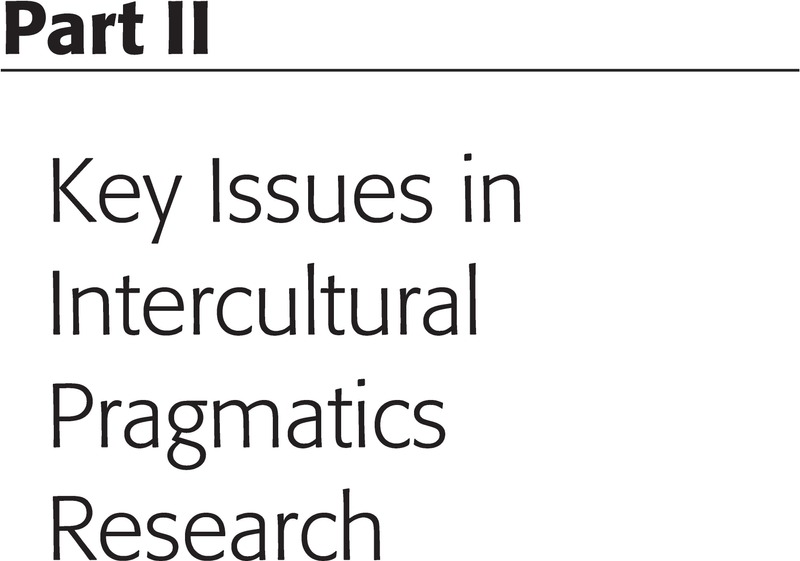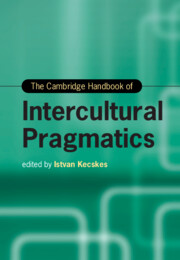Book contents
- The Cambridge Handbook of Intercultural Pragmatics
- Cambridge Handbooks in Language and Linguistics
- The Cambridge Handbook of Intercultural Pragmatics
- Copyright page
- Contents
- Figures
- Tables
- Acknowledgment
- Contributors
- Introduction The Rise of Intercultural Pragmatics
- Part I Theoretical Foundation
- Part II Key Issues in Intercultural Pragmatics Research
- Part III Interface of Intercultural Pragmatics and Related Disciplines
- Part IV Intercultural Pragmatics in Different Types of Communication
- Part V Language Learning
- Index
- References
Part II - Key Issues in Intercultural Pragmatics Research
Published online by Cambridge University Press: 29 September 2022
- The Cambridge Handbook of Intercultural Pragmatics
- Cambridge Handbooks in Language and Linguistics
- The Cambridge Handbook of Intercultural Pragmatics
- Copyright page
- Contents
- Figures
- Tables
- Acknowledgment
- Contributors
- Introduction The Rise of Intercultural Pragmatics
- Part I Theoretical Foundation
- Part II Key Issues in Intercultural Pragmatics Research
- Part III Interface of Intercultural Pragmatics and Related Disciplines
- Part IV Intercultural Pragmatics in Different Types of Communication
- Part V Language Learning
- Index
- References
Summary

- Type
- Chapter
- Information
- The Cambridge Handbook of Intercultural Pragmatics , pp. 105 - 394Publisher: Cambridge University PressPrint publication year: 2022
References
References
References
References
References
References
References
Websites
knowyourmeme.com: https://knowyourmeme.com
stayhipp.com: https://stayhipp.com/internet/memes/leonardo-dicaprio-laughing-django-unchained-memes/
References
Additional Resources
Theoretical frameworks relevant to VL:
Seminal work on VL:
VL works from the perspective of pragmatics:
VL works in intercultural pragmatics:



